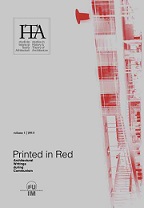From Printed Word to Bureaucratic Negotiation. Housing Projects for Workers during the 1950s in Romania
From Printed Word to Bureaucratic Negotiation. Housing Projects for Workers during the 1950s in Romania
Author(s): Mara MărgineanSubject(s): Architecture
Published by: Universitatea de Arhitectură şi Urbanism »Ion Mincu«
Keywords: housing; workers; Hunedoara; institutions; communist regime
Summary/Abstract: This article investigates how the housing projects constructed in the newly developed Romanian industrial sites during the 1950s were analysed by the review Arhitectura RPR. I pay a particular attention to aspects related to comfort, function and aesthetics, all of which carrying a significant value in deconstructing the official understanding of workers’ everyday life. In order to do so, this article will dwell upon the case of Hunedoara, a steel production center located in the southern part of Transylvania, which had became an icon of the massive industrialization in Romania during the 1950s. Accordingly, the socio-economic measures adopted by the Romanian state immediately after Stalin’s death favored a re-evaluation of the mass housing projects already finalized. Placing a particular weight on how the worker of the steel industry experienced that living space, the official printed discourse came up with a number of suggestions regarding the appearance and function of such dwellings. However, by 1957 when the Romanian authorities re-engaged with massive industrialization and pushed consumption goods industry on the second place, many of these concepts had been re-evaluated as well, most of the time by lowering the initial comfort standards. Nevertheless, this article will show that the local authorities in Hunedoara made use of the initial official understanding of comfort in their attempt to adjust projects elaborated by the central leadership. In this way, I argue that although the official discourse on workers’ housing was articulated by political priorities and ideological constraints varying from one moment to another, it also became a component in the negotiated relations between central and local institutional structures.
Journal: sITA – studii de Istoria şi Teoria Arhitecturii
- Issue Year: 2013
- Issue No: 1
- Page Range: 120-132
- Page Count: 13
- Language: English

